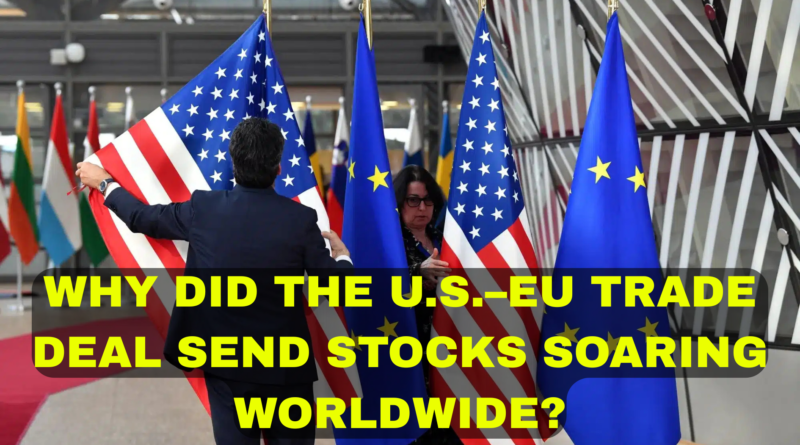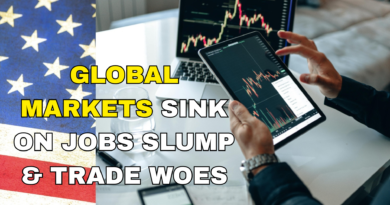HISTORIC U.S.–EU TRADE DEAL SPARKS GLOBAL STOCK MARKET SURGE
In a landmark shift in global trade dynamics, the United States and the European Union have reached a new agreement that caps tariffs at 15% across multiple sectors, signaling a move toward stabilizing economic relations. This historic deal is being hailed by U.S. officials as a crucial step toward reducing global trade tensions and fostering post-pandemic recovery. It follows years of escalating tariffs, trade disputes, and supply chain disruptions, especially in the wake of COVID-19 and geopolitical shocks.
The announcement had an immediate impact on global financial markets. Wall Street responded with enthusiasm as the S&P 500 and Nasdaq hit fresh pandemic-era highs, driven by investor optimism and renewed confidence in cross-border commerce. Tech stocks, in particular, saw a sharp uptick, reflecting expectations of smoother transatlantic data and product flows. The Dow Jones also climbed steadily, though less dramatically, as cyclical and industrial stocks benefited moderately from the deal.
Currency markets were quick to react, with the U.S. dollar strengthening notably against the euro and other major currencies. The greenback’s surge was fueled by improved investor sentiment and projections of increased U.S. exports. Forex analysts interpreted this move as a sign of long-term dollar dominance in global trade, although some cautioned that currency gains might be short-lived if inflation data disappoints or if interest rates are adjusted unexpectedly.
Despite the initial euphoria, not everyone is celebrating. Several EU leaders voiced strong concerns about the long-term implications of the agreement. Critics argue that the deal disproportionately benefits U.S. manufacturers and tech firms while exposing European industries—particularly agriculture and steel—to intensified competition. French and German ministers warned that the agreement could erode the EU’s ability to make independent trade decisions, citing risks to sovereignty and regulatory autonomy.
Trade unions and farmer groups across Europe have echoed those concerns. Many worry that the tariff caps will encourage a flood of cheaper U.S. goods into European markets, undercutting local producers and threatening sustainability standards. In Brussels, opposition parties are calling for an immediate review of the terms, demanding greater transparency and stronger protections for sensitive sectors.
Meanwhile, in Washington, the Biden administration framed the agreement as a diplomatic victory and a win for American workers. Trade Secretary Katherine Tai emphasized that the pact would “unlock billions in new opportunities for U.S. exporters” and reduce inflationary pressures on key imports. Business leaders largely agreed, with several CEOs expressing confidence that the deal would pave the way for a more resilient and diversified global supply chain.
Economists are divided over the long-term impact. Some believe the agreement could be a game-changer, encouraging similar deals with other global partners and bolstering a fragile world economy. Others warn that structural imbalances between U.S. and EU economies may surface in the months ahead, potentially reigniting disputes or triggering sector-specific slowdowns if protections prove inadequate.
Overall, the historic trade pact represents both an economic breakthrough and a geopolitical gamble. While markets may celebrate the short-term gains, the true test of this agreement lies in how effectively it balances national interests, safeguards sovereignty, and sustains equitable growth on both sides of the Atlantic.




